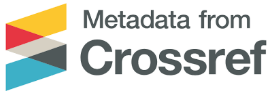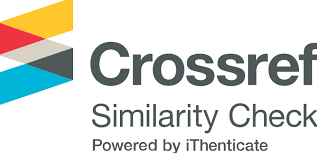Evaluate on genetic diversity of Bambusa burmanica Gamble in some North - Western provinces of Vietnam
Keywords:
Bambusa burmanica Gamble, genetic diversity,, ISSR, molecular markerAbstract
Bambusa burmanica Gamble is a popular multi-use species in many countries, including Vietnam. In Vietnam, Bambusa burmanica Gamble is distributed naturally in the North-Western region. In recent years, this species is planted widely in some provinces for sprouts or canes production, thus research on genetic improvement and conservation is very important. The knowledge of genetic diversity provides the paramount information for research activities design in order to develop the genetic improved cultivars as well as maintain diverse genetic resources of the species. The results of the analysis of 48 samples of Bambusa burmanica Gamble collected from 3 provinces of Son La, Dien Bien and Lai Chau (4 locations/province 4 samples/location) using 7 ISSR primers show that the genetic diversity of May boi is relatively high (h=0.198) with 24% genetic difference between populations. Which, Son La population has the highest genetic diversity and a much longer genetic distance than the others. Some applications of genetic diversity analysis in the study of the genetic development of this species are also mentioned in this stud
References
1. Doyle J. J. and Doyle J. L., 1987. A rapid DNA isolation procedure for small quantities of fresh leaf tissue. Phytochemical Bulletin. Vol. 19: 11-15.
2. Esselman E., Jianqiangamplifiedord D., Windus J., Wolfe A., 1999. Clonal diversity in the rare Calamagrostis porteri ssp. insperata (Poaceae): comparative results for allozymes and random amplifi ed polymorphic DNA (RAPD) and inter simple sequence repeat (ISSR) markers. Molecular Ecology 8: 443-451.
3. Hoàng Đăng Hiếu, Chu Thị Thu Hà, Phạm Bích Ngọc, Lâm Đại Nhân, Nguyễn Thị Thúy Hường, Chu Hoàng Hà, 2016. “Sử dụng chỉ thị ISSR trong việc đánh giá đa dạng di truyền ở quần thể Ba kích tại Quảng Ninh”, Tạp hí Sinh học, 38 (1/2016): 89-95.
4. Kim M. K., Park M. J., Jeong W. H., Nam K. C., Chung J., 2006. SSR marker tightly linked to the Ti locus in Soybean [Glycine max (L.) Merr.]. Euphytica 152(3): 361-366.
5. Kusalaruk, W. and Limsangouan, H., 2015. Nutrition and Nutraceutical of Bambusa burmanica Gamble and Thysostachys siamensis Gamble shoots. Thai Agricultural Research Journal, 33(2): 169-178.
6. Mace ES., Lester RN., Gebhardt CG.,1999. AFLP analysis of genetic relationships among the cultivated eggplant, Solanu melongena L., and wild relatives (Solanaceae), Theor. Appl. Genet. 99: 626 - 633.
7. Nei M. and Li W. H. , 1979. Mathematical Model for Studying Genetic Variation in Terms of Restriction Endonucleases. Proceedings of the National Academy of Sciences of the United States of America, 76: 526-5273. https://doi.org/10.1073/pnas.76.10.5269.
8. Peakall, R.. Smouse P. E. , 2006. GenAlEx 6: genetic analysis in Excel. Population genetic software for teaching DNA research. Molecular Ecology Notes, 6 (1): 288 -295.
9. Powell W., Morgante M., Andre C., Hanafey M., Vogel J., Tingey S., Rafalski A., 1996. The comparison of RFLP, RAPD, AFLP and SSR markers for germplasm analysis. Molecular Breeding 2(3): 225 - 23.
10. Ramanayake, S., Meemaduma, V. & Weerawardene, 2007. Genetic Diversity in a population of Dendrocalamus giganteus Wall. ex Munro (giant bamboo) in the Royal Botanic Gardens in Peradeniya, Sri Lanka. Journal of the National Science Foundation of Sri Lanka, vol. 35, No. 3: 207 -210.
11. Ruan Z. Y., Yang H. Q., Tian B., Yang Y. M., Sun M. S., 2010. Genetic diversity analysis based on ISSR among six populations of Dendrocalamus brandisii in Yunnan Province, China. Journal of 2ndjing Forestry University 32(2): 46-51.
12. Thida Hlaing, 2019, 2rdMyanmar Korea Conference Research Journal
13. Tian, B., Yang, H.Q., Wong, K.M., Liu, A.Z. & Ruan, Z.Y., 2012. ISSR analysis shows low genetic diversity versus high genetic differentiation for giant bamboo, Dendrocalamus giganteus (Poaceae: Bambusoideae), in China Populations. Genetic Resources and Crop Evolution, vol. 59:901-908..
14. Nguyễn Viễn, Trần Thị Liễu, Vũ Thị Thu hiền, Vũ Tiến Chính, Trần Thị Phương Anh, Nguyễn Văn Thọ, 2019. Phân tích đa dạng di truyền các quần thể Tre ngọt (Dendrocalamus brandisii (Munro) Kurz) ở một số tỉnh miền núi phía Bắc Việt Nam dựa trên chỉ thị phân tử ISSR. Tạp chí Công nghệ Sinh học tập 17, số 1/2019: 105-114
15. White T., 2001. Breeding strategies for forest trees: Concepts and challenges. Southern African Forestry Journal, 190 (1): 31-42
16. Wolfe A. D., Xiang Q. Y., Kephart S. R., 1998. Assessing hybridization in natural populations of Penstemon (Scrophulariaceae) using hypervariable inter simple sequence repeat markers. Molecular Ecology 7: 1107- 1125.
17. Yang H. Q., An M. Y., Gu Z. J., Tian B., 2012. Genetic diversity and differentiation of Dendrocalamus membranaceus (Poaceae: Bambusoideae), a declining Bamboo species in Yunnan, China, as based on InterSimple Sequence Repeat (ISSR) analysis. Int J Mol Sci 13: 4446-4457.
18. Yeh, F.C., Yang, R.C. and Boyle, T.. 1999. POPGENE. Microsoft Windows Based Freeware for Population Genetic Analysis. Release 1.31. University of Alberta, Edmonton.
19. Zietkiewicz E., Rafalski A., Labuda D., 1994. Genome fingerprinting by simple sequence repeat (SSR)-anchored polympolymerase amplificationifi cation. Genomics 20: 176-183








